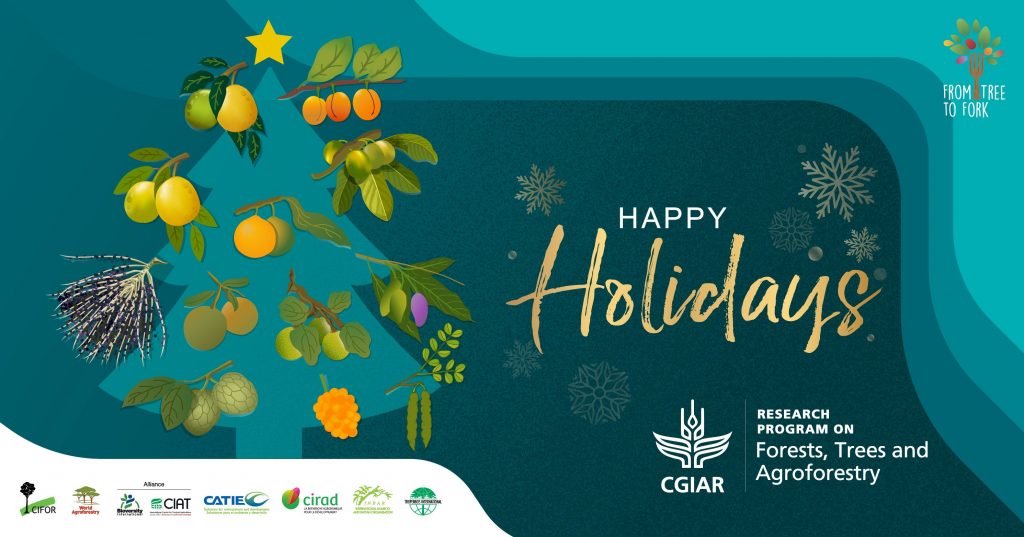The From Tree to Fork campaign is wrapping up for the season, and it’s been a fruitful harvest so far. The 18 fruits and vegetables released up until now bring more visibility to the important contributions of tree foods to livelihoods, cultural traditions, food security, nutrition and more.
For example, did you know that Camu-camu (Myrciaria dubia) contains 30-60x more vitamin C than the same serving of oranges? Each fruit in the campaign collected trivia like this with engaging infographics and scientist-reviewed facts about some of the most unknown and underutilized fruits and vegetables from trees. Much of this information came from CIFOR-ICRAF databases including the Priority Food Tree and Crop Food Composition Database, the Tree Functional Attributes and Ecological Database and the AgroforesTree Database.
Launched earlier this year, From Tree to Fork is aligned with other important initiatives on the global agenda including the International Year of Fruits and Vegetables (IYFV) — a time to raise awareness for how trees can help make food systems more sustainable and resilient worldwide. This year (2021) also marks the start of the U.N. Decade on Ecosystem Restoration, which has direct links to food trees and agroforestry because people are more likely to restore landscapes with trees that have multiple benefits for human health and well-being.
READ THE FTTF LAUNCH BLOG
A few of the scientists who worked on the campaign also shared their personal experiences with these valuable tree foods.
“As a huge lover of chocolate, I was delighted to discover that ‘chocolate’ could also be made out of a whole different species [Copoazu (Theobroma grandiflorum)!” said FTA scientist, Elisabeth Lagneaux. “Try it if you can.”
Michael Brady, a CIFOR principal scientist and leader of FTA’s Flagship 3, has a similarly positive experience associated with Sago, a starch made from the trunk of the Sago palm tree (Metroxylon sagu):
“I did my graduate research in Sumatra and met my wife there,” he said. “During that time, I have many happy memories of eating Pempek, a famous dish made by mixing Sago flour and fish that is eaten throughout the island.”
These colourful images and key messages are also featured as part of a virtual exhibit on FTA’s new Google Arts & Culture page. This display, along with seven other stories on the page, champion the importance of forests, trees and agroforestry to respond to environmental crises. Also, check out the recently released FTA Highlights Volume No. 5 on Food Security and Nutrition to learn more about the work scientists have done on tree foods over the last 10 years.
In 2021 we brought you 18 infographics and more than 50 eCards and key messages on particular tree foods. There are many more underutilized fruits and vegetables that the campaign was not able to cover this year, and we hope to bring you more in 2022. Here’s a taste of what we could serve you…
- Peach palm (Bactris gasipaes)
- Ungurahui (Oenocarpus bataua)
- Monkey orange (Strychnos cocculoids)
- Safou (Dacryodes edulis)
- Marula (Sclerocarya birrea)
- Kiawe (Prosopis pallida)
- Wild plumb (Ximenia americana)
- Shea (Vitellaria paradoxa)
- Cherimoya (Annona cherimola)
- Bengal quince (Aegle marmelos)
- Abiu (Pouteria caimito)
Enjoy your holidays and make sure you treat yourselves a different fruit every day!












